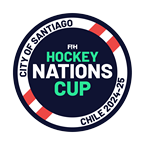
The International Day of Sport for Development and Peace is a key fixture in the calendar of the Olympic Movement because it is a day that celebrates more than sporting excellence – it is a day recognising that sport can be used as a vehicle for peace and development.
Hockey, which has been an Olympic sport since 1908, has embraced this side of the Olympic Movement in a series of projects across the globe. Driven by a desire to give back to the community, hockey players past and present are involved in activities that range from addressing health problems such as HIV or cancer to promoting education and improving quality of life or empowering groups of people: the young, the poor, the elderly, women or people with disabilities.
Looking back four years to a time when the world was gearing itself up to London 2012, we can see this adherence to the Olympic ideal was gathering momentum and, to the credit of hockey players and hockey communities everywhere, the momentum has increased in velocity and can be seen in projects throughout the world. Here are a few examples.
Back in 2011, the FreFlyers were formed in the same London Borough that would be transformed for those heady weeks of July and August 2012. The FreFlyers were a group of kids from poor backgrounds who joined together to receive coaching from the Great Britain hockey players and their coaching staff, a project driven by the Great Britain team manager Andy Halliday.
Fast forward to today and the FreFlyers are a thriving hockey club, playing competitive hockey, about to gain league status and having enjoyed two hockey tours to the Netherlands. The children, have gained self-respect, knowledge about their own health and fitness and, for some, a career in sport.
Santi Freixa, the former Spanish player and current coach of the Spanish national team, and Andreu Enrich, who both won the 2004 Champions Trophy with Spain, head a charity in India called Stick for India.
Andreu explains what the project aims to achieve: “Our mission is to use hockey as a social development tool for the children in the rural area of Anantapur, India. We are sponsoring more than 45 schools and two hockey academies, one for boys and one for girls. In total more than 1,200 players are practising hockey regularly.”
Not only is Stick for India raising the standard of the game in the area, it is also giving these children regular meals, an education and an awareness of how to live a healthy lifestyle.
Another collaboration between European hockey players and developing nations is taking place in Nairobi, Kenya. Here, Dutch businessman Erik van der Dussen has used his considerable contacts with players and coaches in the Netherlands to help spearhead, fund and run a project working with children in Nairobi.
Every Saturday, Erik, along with Tom Olal of the Kenyan Hockey Union, runs coaching courses for 30 boys and girls. Not only do the children get insight into healthy living and the importance of exercise, but they get the chance to socialise in a relaxed setting, to develop skills and self-confidence, and at the end of the session they get a hot meal.
Erik’s club in the Netherlands, Breda, contributed balls, sticks, socks and shin-pads as the children initially wore nothing on their feet to play the game.
A different example, but one that underpins the Olympic ideal of development, can be seen in Trinidad and Tobago. Kwan Browne was a student with exceptional hockey skills when he was offered a sports scholarship in England. He accepted and moved to England, where he is now heavily involved in coaching the men’s national team as well as head coach at Canterbury Hockey Club. But Kwan has never forgotten his roots, and as well as regular trips back to Trinidad and Tobago to run coaching clinics and to help develop the national team, he also paved the way for other young hockey players to gain a university education in England.
Kwan recently celebrated 300 caps with Trinidad and Tobago and this summer will be part of the team hoping to win at the Pan-American Games and book a ticket to the Olympics in 2016.
While projects such as the FreFlyers and Stick for India are occurring everywhere, there is another side to hockey that should be celebrated as part of this International Day of Sport for Development and Peace and that is the make-up of the game itself.
Hockey is a truly gender-neutral sport. It is the one sport where, at international level, the men and women get equal billing. At the 2014 Hockey World Cup, the women’s matches were aired on television as much as the men’s games. The stadium was packed whether it was a women’s match or a men’s match, the players receive equal coverage and play the game in exactly the same way.
And that equality extends to age groups as well. Where many other sports tend to be the domain of 18-35-year-olds, with any older players being seen as a ‘rarity’, hockey players can keep playing and competing to whatever level they choose. The International Masters Hockey Association organises international matches at every age group from 35 – 60 and the World Grand Masters Association organises international matches at every age group from 60+. At the 2014 Hockey World Cup, an equivalent Masters event for men and women ran at the same time.
So, with less than 500 days to go until Rio 2016, whether it is through social development, breaking down barriers or promoting equality, the hockey community both supports and embodies the ideals as laid down by Pierre de Coubertin and the Olympic Movement.
























